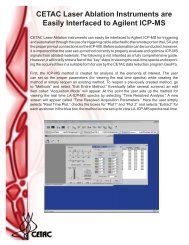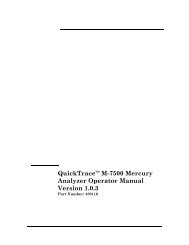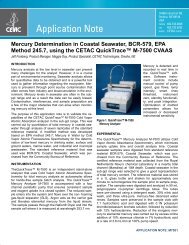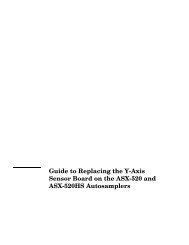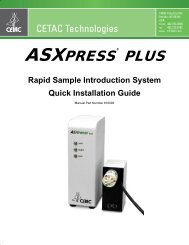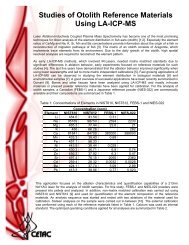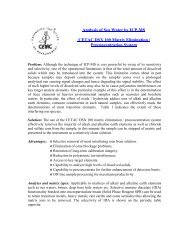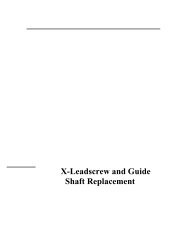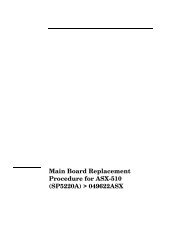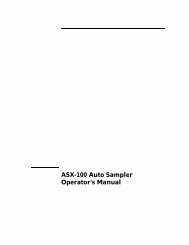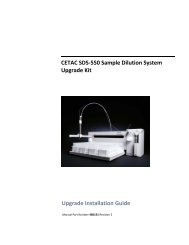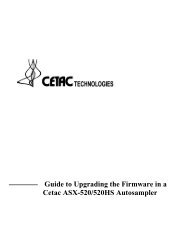CETAC M-7600 Mercury Analyzer Operator's Manual
CETAC M-7600 Mercury Analyzer Operator's Manual
CETAC M-7600 Mercury Analyzer Operator's Manual
You also want an ePaper? Increase the reach of your titles
YUMPU automatically turns print PDFs into web optimized ePapers that Google loves.
Operator’s <strong>Manual</strong><br />
Chapter 4: Using the <strong>Analyzer</strong><br />
QuickTrace M-<strong>7600</strong> Automated <strong>Mercury</strong> <strong>Analyzer</strong><br />
Figure 4-1<br />
QuickTrace M-<strong>7600</strong> Block Diagram.<br />
Sample Introduction & Stannous Chloride Reactor<br />
Refer to Figure 4-1 to trace the path of liquids through the M-<strong>7600</strong> System. An<br />
acidified digested aqueous sample from the autosampler is introduced, via<br />
peristaltic pump as Hg 2+ dissolved in solution. A reducing agent (10% stannous<br />
chloride in 7% HCl), is introduced via a parallel pump channel. The sample and<br />
reagent (SnCl 2) streams join at the mixing tee (1), and immediately enter the<br />
QuickTrace M-<strong>7600</strong> tubing reactor (“Liquid Mix”). Sn 2+ reduces Hg 2+ in<br />
solution to Hg 0 while the mixture is en route to the Gas-Liquid separator (GLS).<br />
At this stage and prior to the GLS, the analyte is present as a finely dispersed<br />
emulsion of liquid (metallic) Hg 0 micro-droplets, in excess SnCl 2 solution.<br />
76



